Two tone kitchen cabinet ideas – 10 colour combinations to inspire
Are you wondering how much it costs to run a fan? We've done the sums and have found ways to cut your spend

Deciding which colour kitchen cabinets to go for can be a struggle. But why restrict yourself to one colour, when you can have two? The latest two tone kitchen cabinets trend sees designers putting different colour combinations, paint treatments and finishes together, creating colourful bespoke kitchens that have far more personality than standard off-the-shelf kitchens. Problem solved.
Two tone kitchen ideas can vary, depending on how bold or conservative you want to go. Bringing in a kitchen island in a contrast shade is an easy way of creating a two tone effect. Or consider mix-and-match cabinets in a spectrum of colours if you want to create a bolder look.
Two tone kitchen cabinet ideas
When it comes to two tone kitchen cabinets, colour isn’t the only way to go. Mixing two different materials or contrast finishes will also create a two tone effect. To find out the kitchen colour schemes, we asked a team of kitchen experts to share their insight on how best to put together a two tone kitchen.
‘Two-toned kitchens can be that perfect middle ground for homeowners that want to go bold with colour, but don’t want to commit to the full design,' says Ashleigh Hanwell, Senior Designer at Second Nature Kitchens. 'Pairing a striking hue with a neutral palette will allow the design to work in both contemporary or classic settings.’
1. Put your island centre stage
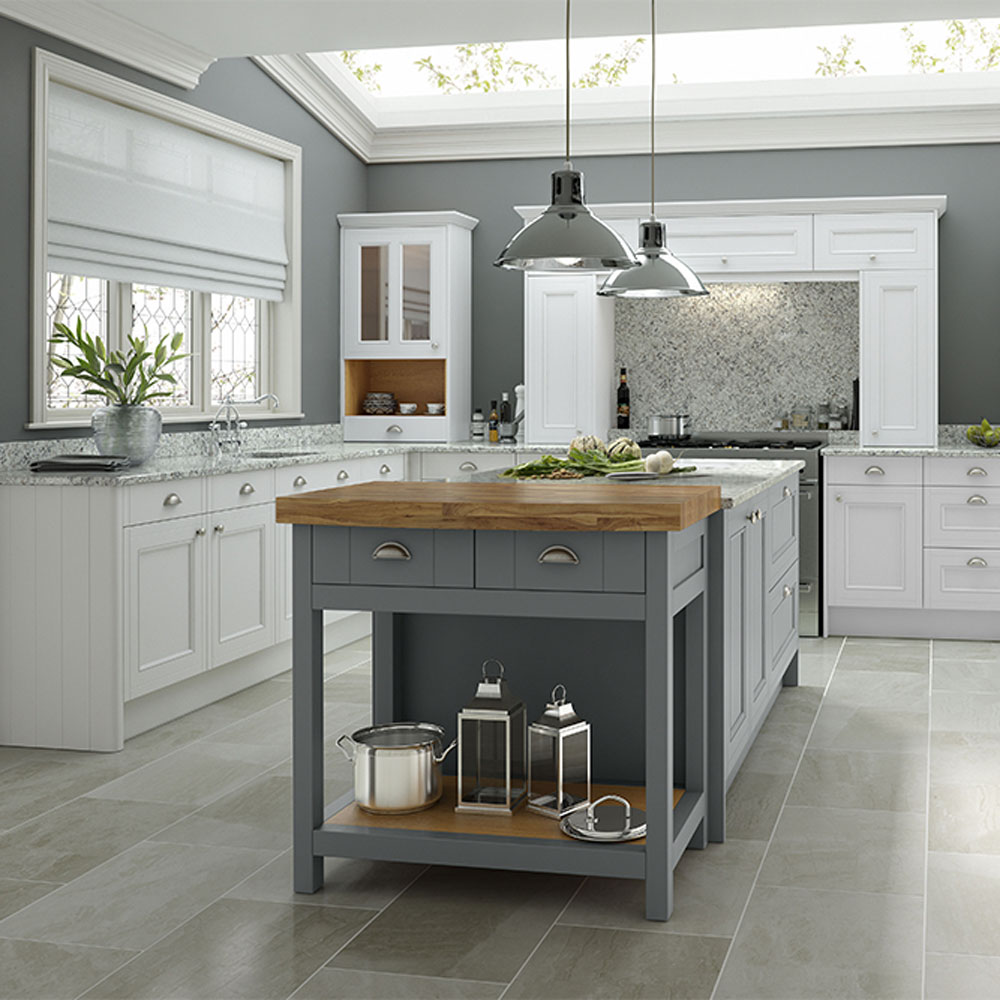
One of the simplest and most popular ways of creating a two tone kitchen effect is by highlighting a central island in a contrast colour. A great way of giving an existing kitchen a new look, all that’s required is a new freestanding island or updating an old one with a lick of paint, so it’s an easy hack that won’t cost a fortune. Find out how to paint kitchen cabinets before you start.
‘Opting for a contrast colour on a kitchen island, teamed with a lighter shade on the cabinets around the perimeter of the kitchen will draw the eye and add a focal point to your room,’ says Darren Watts, Design Director at Wren Kitchens.
‘A matt-black kitchen with an ice-white island in the centre will add instant drama; or opt for a country-grey kitchen island, perfect against a neutral backdrop of soft white or cream,' adds Darren.
Sign up to our newsletter for style inspiration, real homes, project and garden advice and shopping know-how
2. Bring balance with half-and-half colour
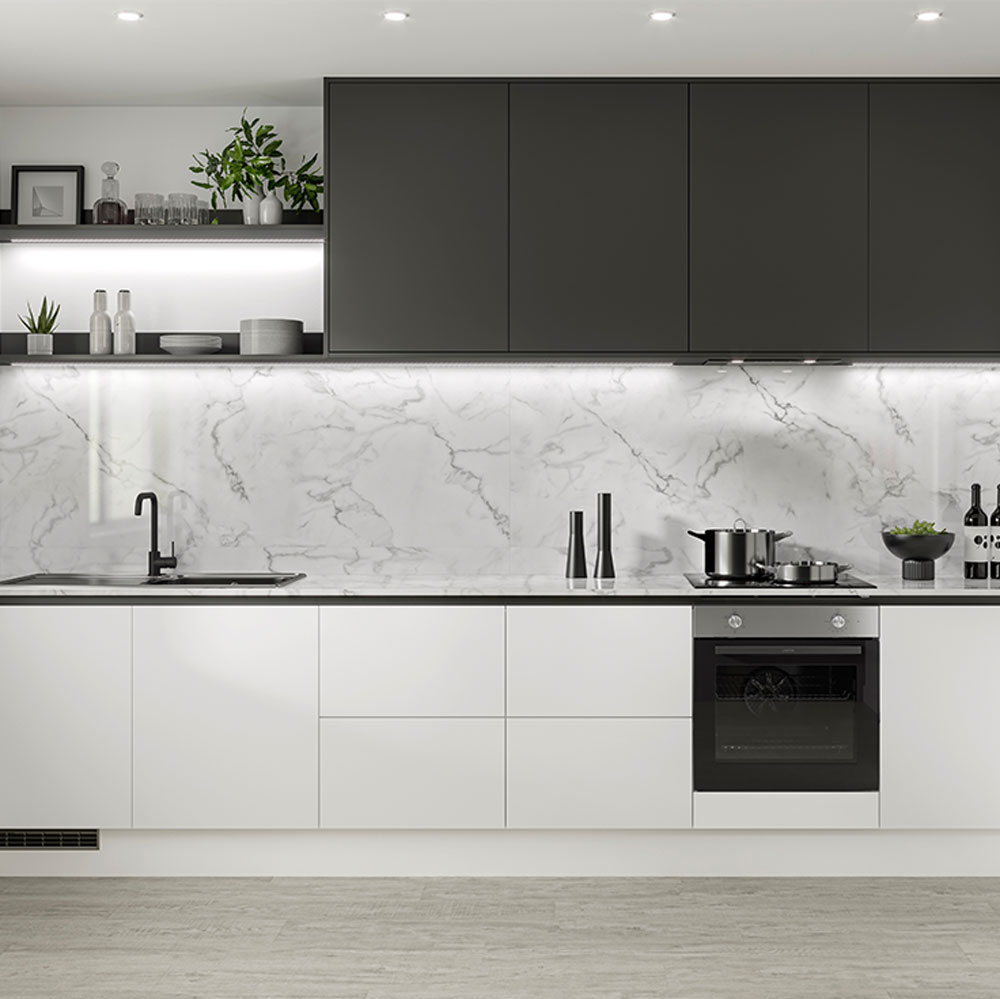
A halfway split with base units in one colour and top units in a contrast colour is another easy way of creating a two tone kitchen. Struggling to find white kitchen ideas? Adding a run of black wall units is a clever way of giving an all-white kitchen a new look and simply replacing a few doors is way cheaper than buying a whole new kitchen.
‘Although darker tones may seem intense, they are a great way to add drama to a paler scheme,’ says Tori Summers, Director of Design, Product & Innovation at Howdens. ‘Black cupboards can be added into an all-white layout to create a stylish monochrome look.’
‘These timeless colours also mean that you can be more creative with introducing on-trend textures, like marble, or when adding linear details - proving that this scheme can be more than just black and white.’
3. Try a colour block effect

Rather than a halfway split or single focal point island, colour blocking is another technique that designers use to create a two tone kitchen. Colour blocking works by dividing the kitchen up into distinct blocks of colour and works well in larger kitchens or open-plan kitchen diners.
Use high-contrast colours for best effect, with wall and base units as contrast blocks and perhaps islands and tall cabinets in contrast colours too. Tie the two colours together by bringing in co-ordinating accent details such as door handles and drawer pulls.
‘Introducing a bold colour to a kitchen makes for a striking design statement,’ says Graham Smith, Head of Retail and Commercial Design at Life Kitchens. ‘The amount of colour or tone you choose is a personal decision and ultimately depends on how brave you are feeling.’
‘In order to brighten a room with a bit of colour, whilst keeping the space balanced, paint the rest of the room a white, neutral or muted pastel shade to provide contrast – these tones will help bring down the intensity of a colour in a room and ensure a more understated impact.’
4. Choose colours that complement
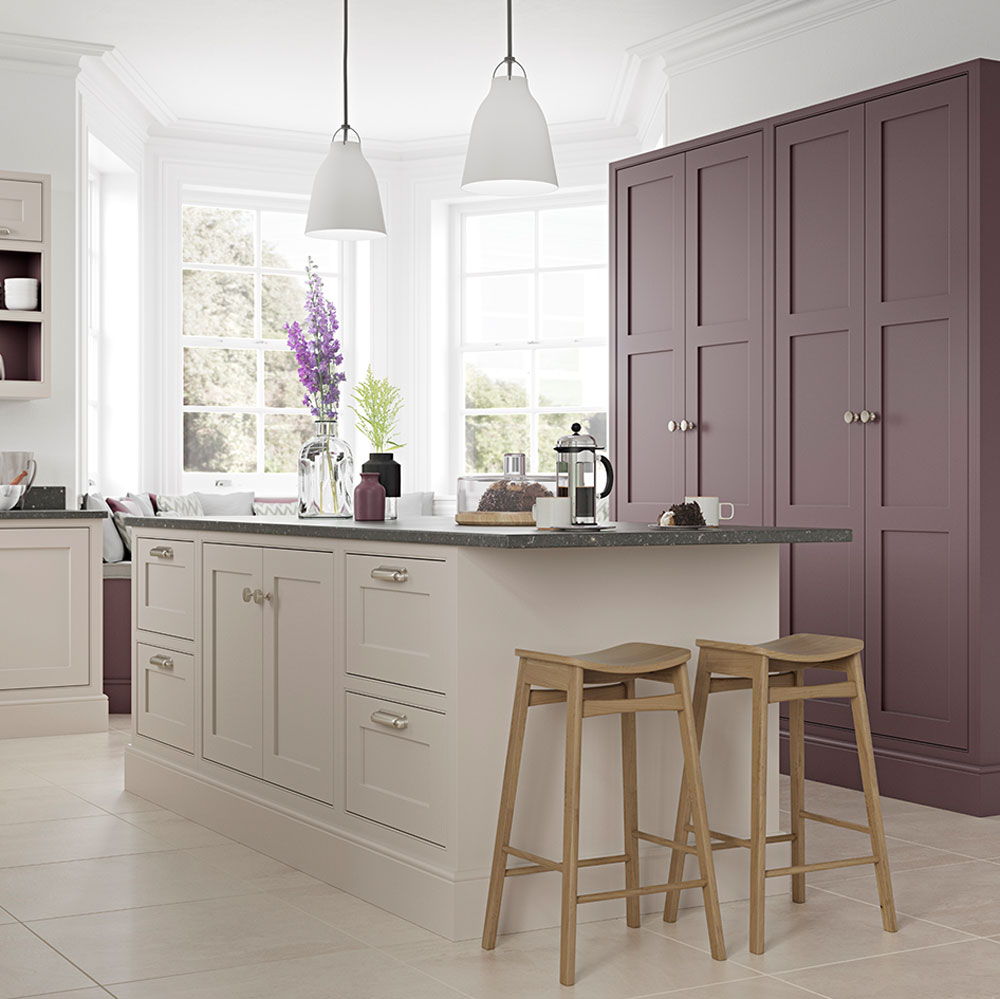
‘For complementary kitchen colours, opt for two choices that sit opposite each other on the colour wheel,’ says Emma Stuart Stephens, Head of Marketing at Mereway. ‘These formidably complement one another and would be the perfect choice for wall and base cabinets against a feature island.’
‘This method provides a limitless number of complementary kitchen colours for you to choose from and get creative. For example, a purple and beige combination creates an exciting and contemporary colourful pop against a subtly beautiful neutral tone.’
5. Create a touchy-feely vibe with tactile surfaces
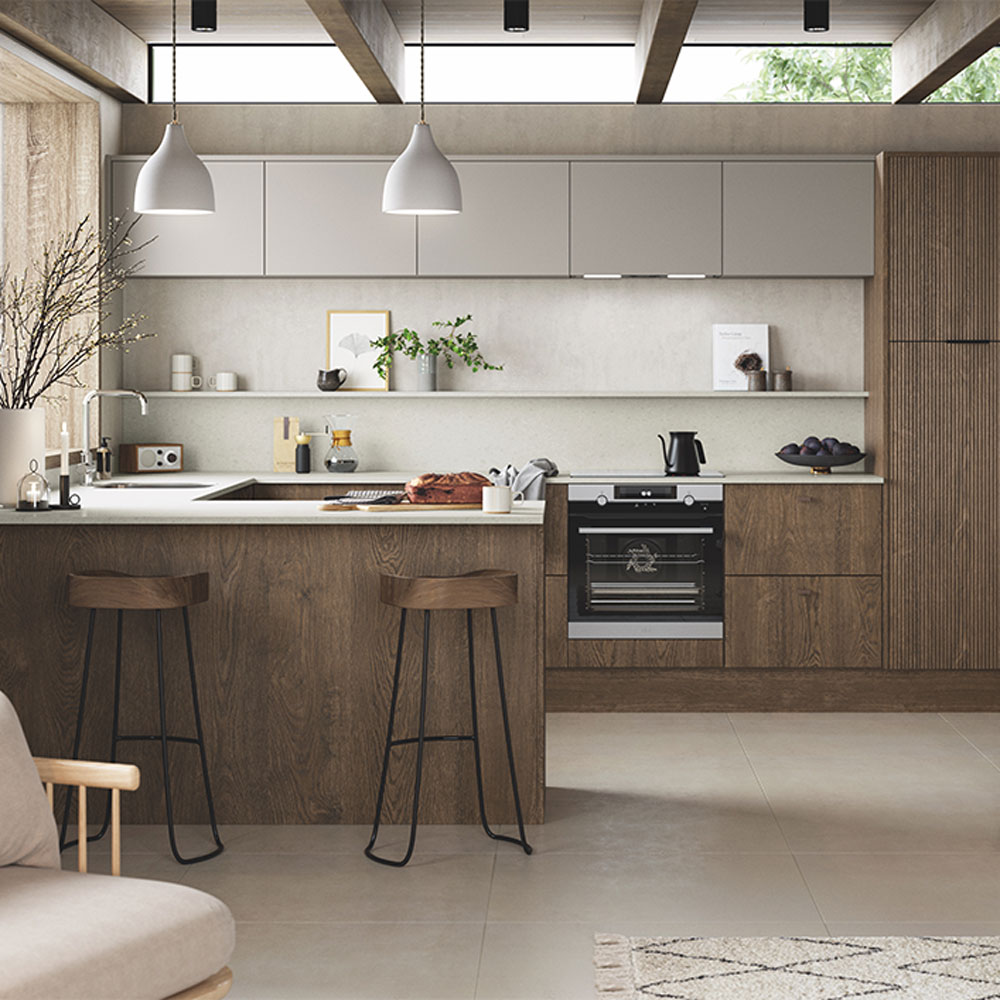
Colour isn’t the only option when it comes to two tone kitchen cabinet ideas. Using contrast finishes creates a more subtle effect but will add depth to a kitchen scheme. Mix matt surfaces with gloss, wood grains with stone and marble finishes and ribbed surfaces with smooth for a tactile effect.
‘If your kitchen is on the smaller side, incorporating two colours into your design can help to enhance the appearance of space,’ says Lizzie Beasley, Head of Design at Magnet. ‘Choosing a lighter shade for your upper cabinets draws the eye upwards, enhancing the feeling of spaciousness without sacrificing storage.’
‘For this type of design, your colour palette can range from tonal shades to bold contrasts - depending on your style and the look you’re aiming for. Neutral upper cabinets can pair with almost any colour or finish to create a sleek, stylish aesthetic that stands out from the crowd.’
6. Create a colourful standout feature
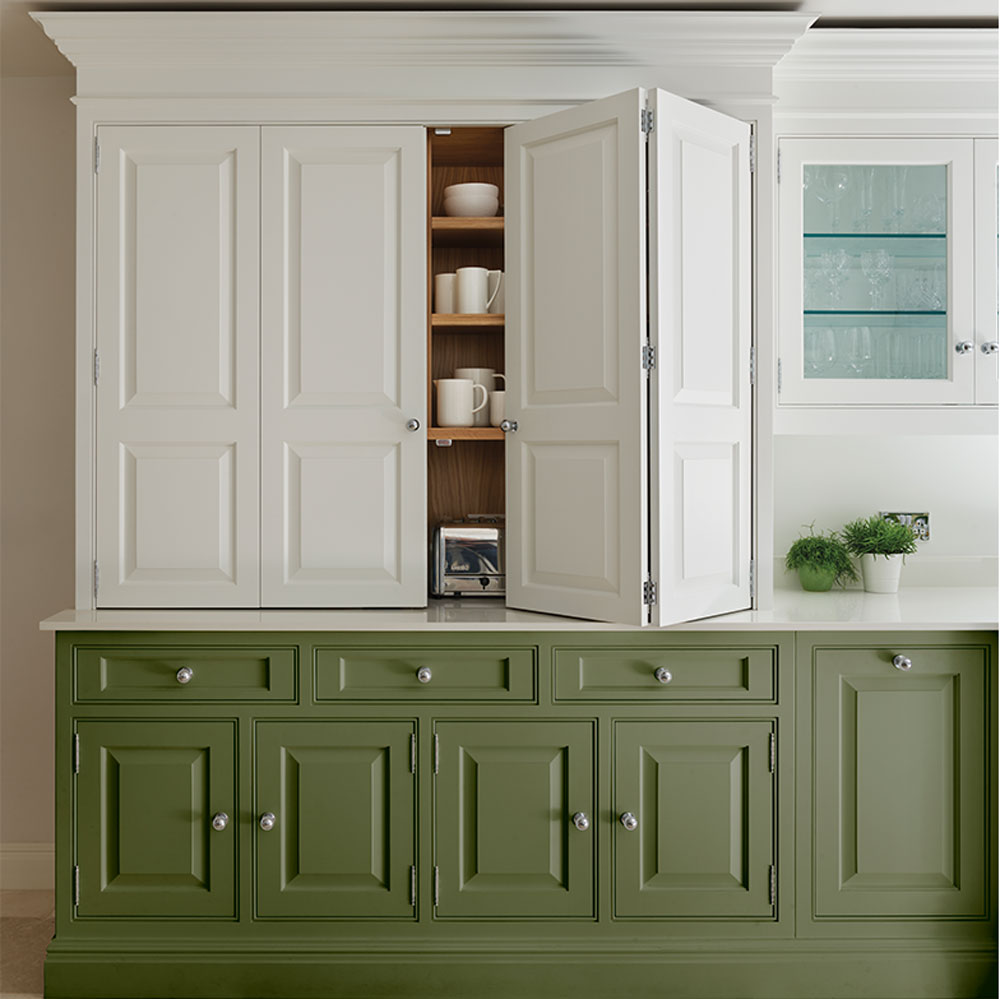
Give a traditional piece of kitchen furniture a modern twist with a two tone treatment. Use contrast hues to create a colour split on a single piece, such as a kitchen dresser or full-height cabinet, with the top painted a pale colour and the bottom in a darker shade.
‘You can use bold colours side by side to create a high contrast look or combine calming neutrals with a dark paint colour on an island or full-height cupboard for depth and sophistication,’ says Tom Howley, Design Director at Tom Howley. ‘Remember, when it comes to choosing a palette for your kitchen, it’s essential to choose the right tones to reflect and balance your lifestyle and personality.’
7. Add a pop of zingy colour
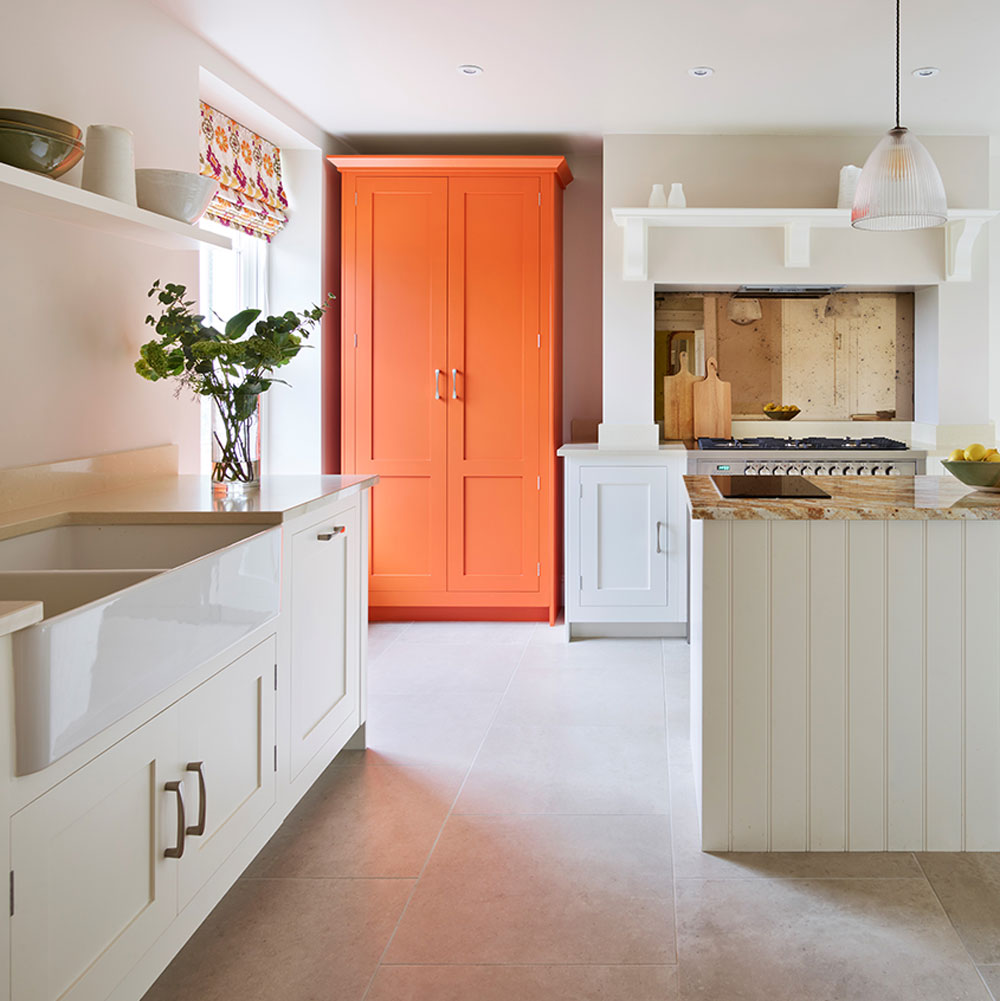
‘When your head is saying ‘choose white’ but your heart is crying out Farrow & Ball ‘Railings’ then adding an accent colour is the way to go,’ says Melissa Klink, Creative Director at Harvey Jones. ‘Opt for your bolder colour choice on a third or less of the total space to ensure it isn’t overbearing, particularly in smaller kitchens.’
‘Darker wall units will stand out in more modest spaces, while in bigger rooms an island or a wall-to-ceiling bank of cabinets in a contrast shade work perfectly.’
‘With almost limitless colours to pick from, you can mix three shades together. Choose subtle changes in faded tones to give a Shaker style kitchen a classic unfitted look. Or opt for a bold contrast by highlighting a feature, such as a dresser or larder in a striking shade.’
8. Colour block with fun brights
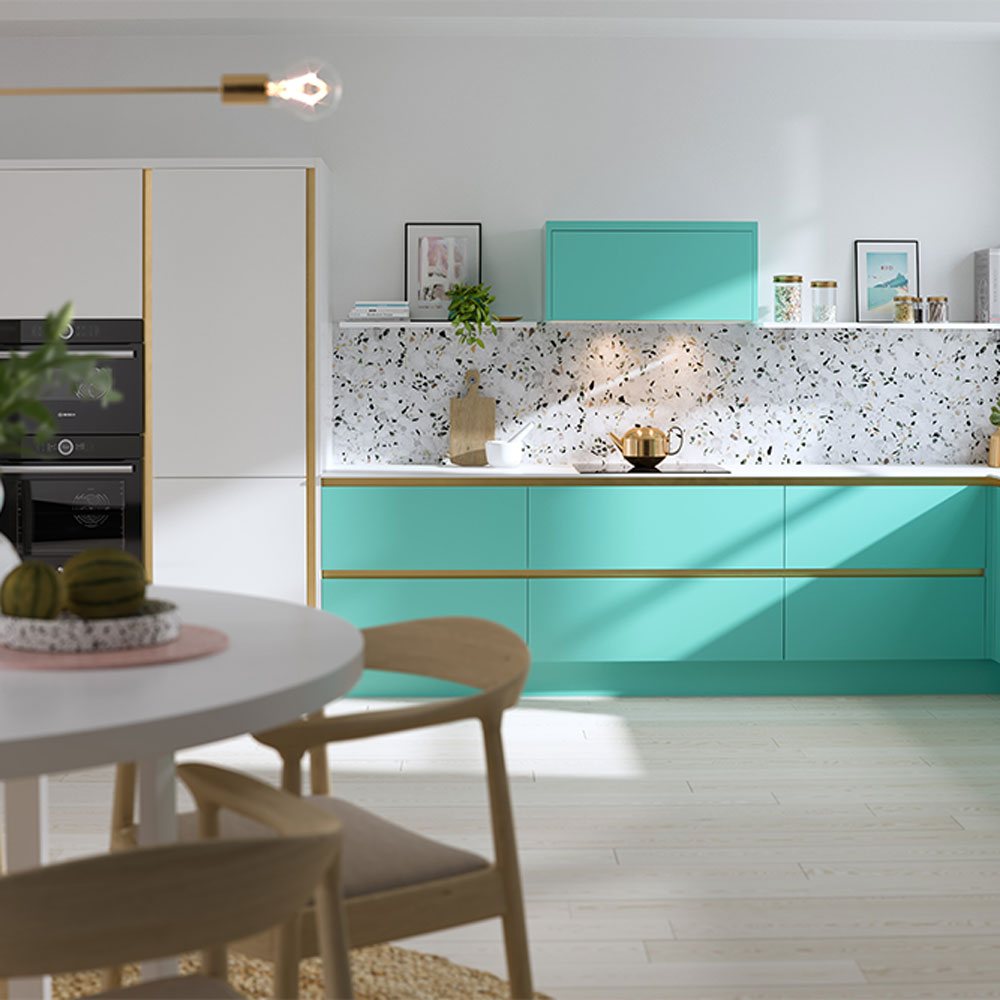
‘A fun way of colour blocking is using lots of different colours in the same room,’ says Darren Watts, Design Director at Wren Kitchens. ‘This creates a fun and busy looking kitchen, especially when the cupboard doors are all different colours, or a bright motif is applied to the walls. Think of it as carefully constructed chaos.’
‘Another type of colour blocking is using one colour across your entire design scheme. Technically, an all white kitchen is colour blocked, though many lovers of this trend will choose a more dramatic colour, such as aubergine or green, to make a statement.’
‘Alternatively, colour blocking can also be applied by using one bright splash of colour in an otherwise monotone kitchen. For example, a letterbox red cabinet against a white kitchen works well, or bumblebee yellow against a grey background.’
9. Mix and match with wood and gloss
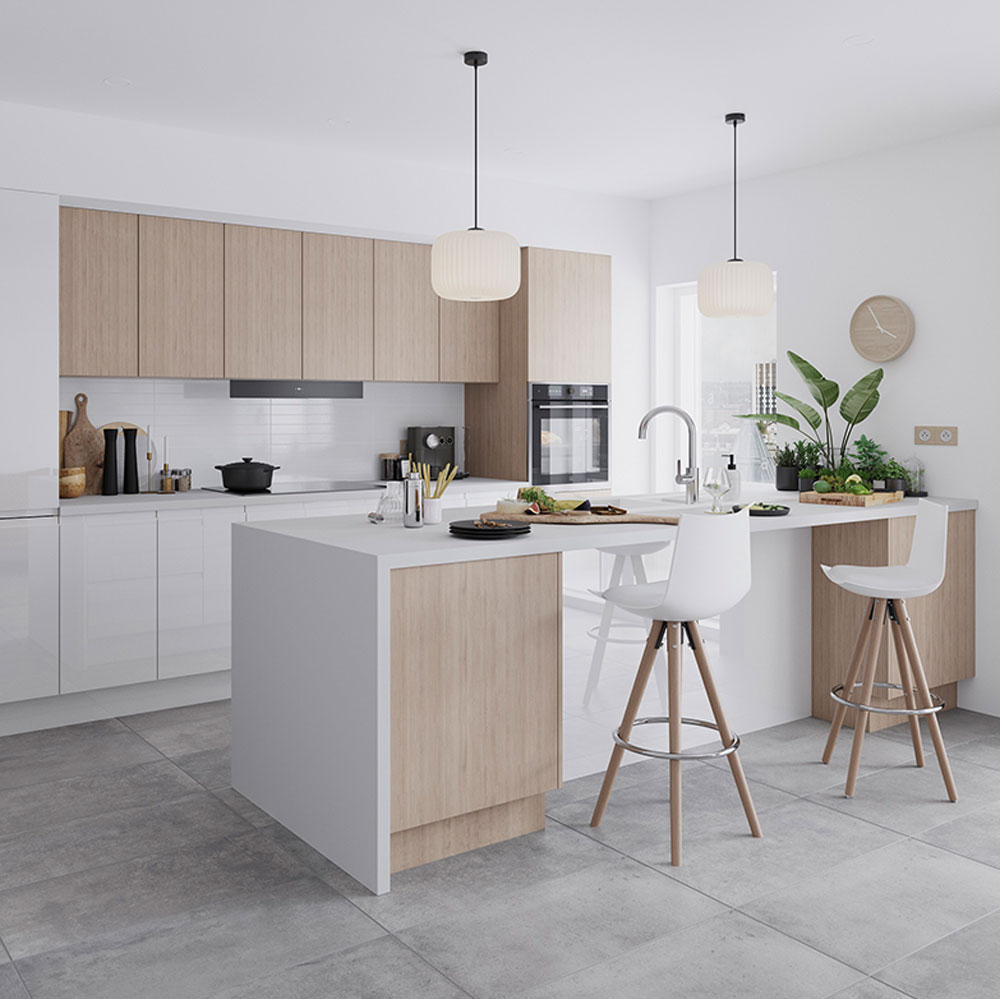
If high contrast colours in a kitchen feel too overpowering, take the look down a notch and use a calmer colour combination instead. While classic white kitchens never go out of style, they can sometimes feel a little plain. For ways to add colour to an all-white kitchen, try teaming white high gloss with Scandi-style wood for a natural pairing that will give contrast without an overload of colour. Adding a few doors in a contrast finish is a super easy way of giving a classic all-white scheme a contemporary twist.
10. Keep it subtle with tone-on-tone colour
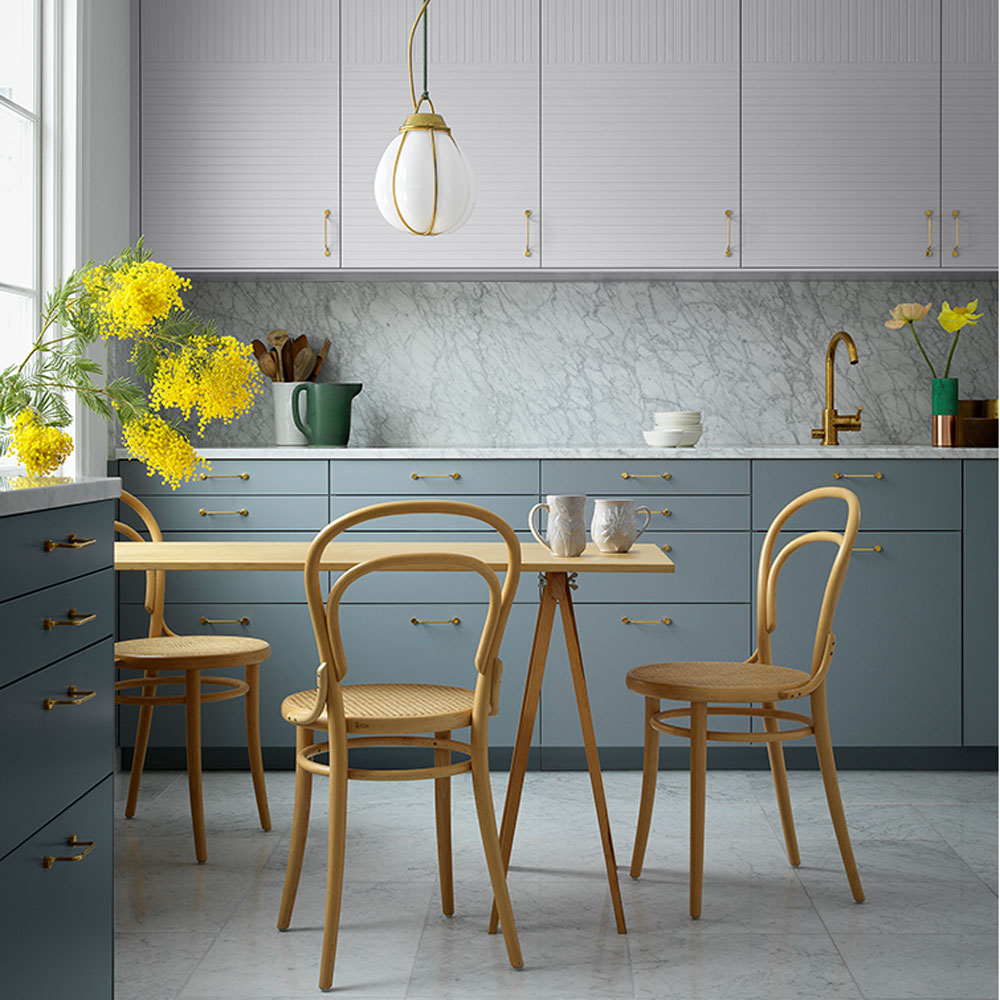
For a super-stylish but understated look, instead of choosing two contrast colours, use different saturations of one colour to create a tonal effect – as this fine grey kitchen idea demonstrates.
Paint lower cabinets the darker hue and upper cabinets the lighter one to create a graduated effect. This is a look that works best with neutral tones, such as grey, taupe or beige and with cabinets that have a surface effect or tactile finish to add extra visual detail.
Which colour combination is best for a two tone kitchen?
‘Kitchen colour palettes predominantly work in two ways, with complementary colour or analogous colours,’ says Emma Stuart Stephens, Head of Marketing at Mereway. ‘Identifying how and why colours work together is a science in itself, but not as tricky as it sounds.’
‘The colour wheel is an exemplary place to start in identifying how colours bond together and bring palettes to life. Use it to identify your complementary colours and analogous colours to find the perfect palette for your kitchen.’
‘For complementary kitchen colours, opt for two choices that sit opposite each other on the colour wheel. These formidably complement one another and would be the perfect choice for wall and base cabinets against a feature island.’
‘When working on the analogous colour section for your palette, this is working with the three sections of the colour wheel sat together, meaning the colour scheme prioritises one primary colour or a colour bleeding into another. This works exceptionally well when a strong kitchen palette theme is what you are going for, such as a blend of varying greens to achieve a natural, yet diverse colour scheme.’
Should the upper or lower kitchen cabinets be darker?
A general rule of thumb is to keep darker colours lower down with paler colours on top. Using darker colours on base units creates a grounding effect and helps to define the kitchen space, while using lighter colours for top units helps to reflect light and create a feeling of spaciousness, so is perfect for smaller kitchens.

Lisa is a freelance journalist who has written about interiors for more than 25 years. Previously editor of Style at Home magazine, she has worked on all the major homes titles, including Ideal Home, Country Homes & Interiors, 25 Beautiful Homes and Homes & Gardens. She has covered pretty much every area of the home, from shopping and decorating, crafts and DIY to real homes and makeovers and now regularly writes gardening stories for Ideal Home.